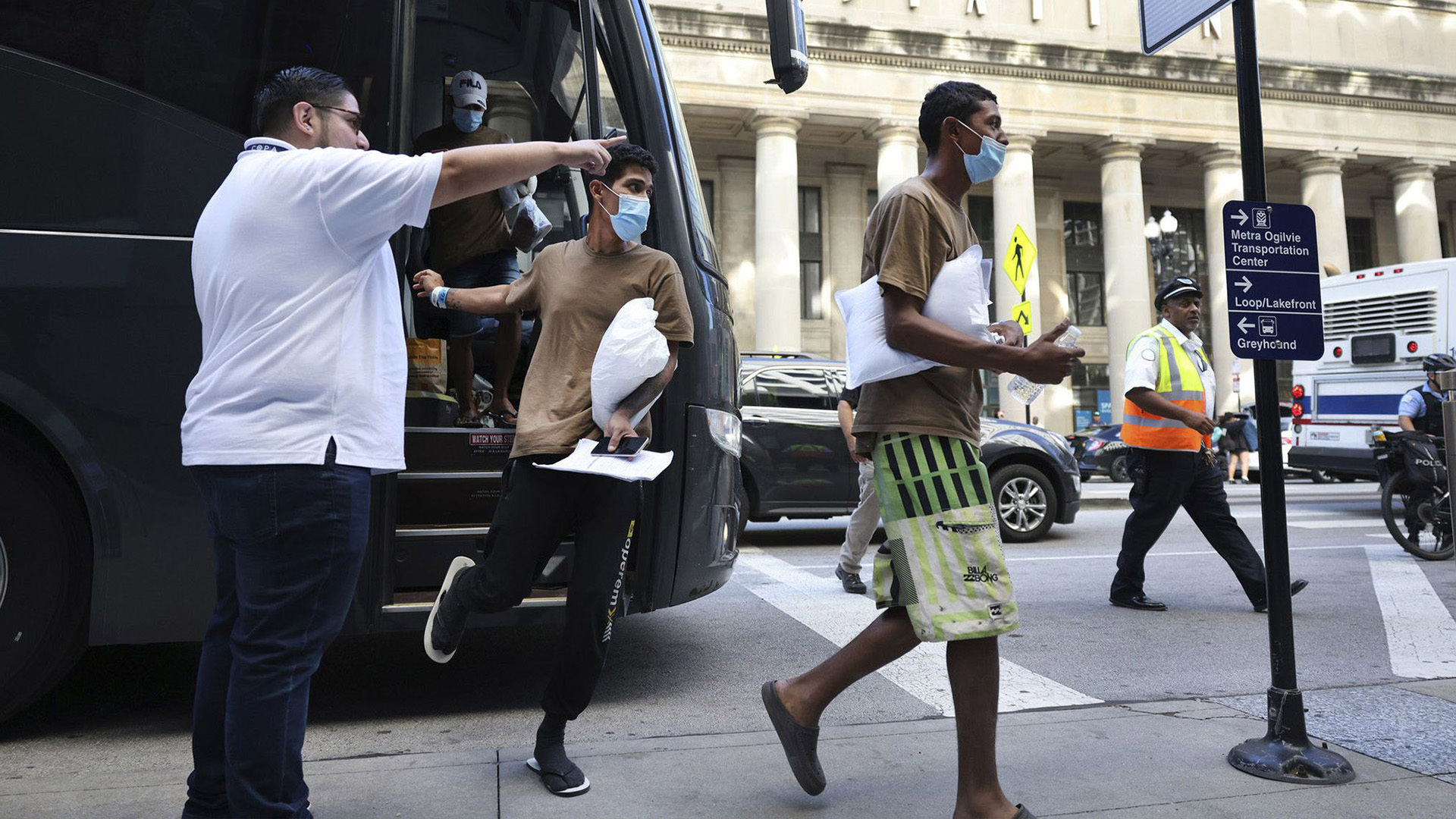
Eric Adams: This issue will destroy New York City.
Simone Del Rosario: New York, Chicago, Denver…Bus after bus after bus, these cities are starting to buckle under the budgetary pressures of the nation’s migrant crisis.
Mike Johnston: Without any federal support, without any work authorization, without changes to policy, we are going to have to make changes to what we can do in terms of our city budget.
Simone Del Rosario: In Denver, that means a $180 million gap in the city budget that must be filled to shelter existing and incoming asylum seekers.
Mike Johnston: This is a plan for shared sacrifice.
Simone Del Rosario: The Department of Motor Vehicles and Parks and Rec are the first to see cuts, but certainly won’t be the last. In 2023, the midsized city received more migrants per capita than any other city in the nation.
Eric Adams: The curveball though was the migrant crisis. Curveball? That’s not even a curveball. That’s a brushback pitch that knocked us to the ground but we gotta get back up and knock it out of the park.
Simone Del Rosario: For the fiscal year ending June 30, 2023, New York City spent $1.5 billion in asylum-seeker costs. In the current fiscal year, which ends June 30th of this year, the city expects costs to nearly triple, budgeting $4.2 billion to care for incoming migrants, most bused from the border. To offset, Mayor Adams announced 5% budget cuts for every city agency, from education to public safety.
Felix Winnekens: It’s really the cities that are on the hook to cover the majority of the expenses.
Simone Del Rosario: Felix Winnekens of S&P Global is closely monitoring cities’ credit health as they face abnormal migrant pressures.
Felix Winnekens: New York City is in a bit of a unique situation because of its right to shelter. So basically, anyone in the city, could be a homeless person, could be a migrant or an asylum seeker that needs shelter, the city has to provide shelter. That’s part of a consent decree that the city entered into back in the 1980s.
Simone Del Rosario: Mayor Adams has moved to suspend right-to-shelter, while they currently house more than 60,000 asylum seekers in the city. The state, which supports Adams’ request to suspend, has had to dip into reserves to help shoulder costs.
Meanwhile in Illinois, a battle is brewing between governments. While the state and Cook County have pledged $250 million to support migrant operations, it’s $71 million shy of what is reportedly needed to keep migrant programs running through the year.
Brandon Johnson: I don’t believe anyone in Chicago is questioning my commitment to this mission.
Reporter: Well they are because you didn’t put in the $70 million that you promised you would give them at that meeting and then walked away from it.
Brandon Johnson: Were you at that meeting?
Simone Del Rosario: Unlike the federal government, most cities and states are required to pass balanced budgets. So when migrant costs surge, money has to be cut from other services. Winnekens said there’s no near-term pressure on cities’ ratings so long as those cuts are made.
Felix Winnekens: But I think it’ll be a continued struggle for those cities to find the right balance between sort of cutting expenditures, making ends meet to address the increase in asylum seeker costs.
Simone Del Rosario: Meanwhile, Texas Governor Greg Abbott has vowed to continue busing migrants to these cities, saying they’ve seen only a fraction of what overwhelmed Texas border towns face daily. While he criticizes the federal government’s border policies, these Democratic mayors also have federal beef.
Eric Adams: We’re getting no support on this national crisis.
Simone Del Rosario: And with Congress at a perceived impasse, Winnekens says cities could be on their own to shoulder costs at least through the election. While New York, Chicago and Denver have faced the brunt of migration after border towns, S&P is also eyeing D.C., Boston, LA and San Francisco as asylum seekers seek out more big cities.







